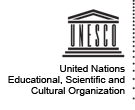In the Dominican Republic there are 7 national printed newspapers and an imprecise number of local newspapers. Over five hundred radio and television stations and more than three hundred domestic and international TV cable stations. The practice of journalism is governed by the Constitution of the Dominican Republic; 61-32 Law on Freedom of Expression and Media; by Law 10-91 of licensing of journalists; 200-04 and the Law on Free Access to Public Information.
The Dominican College of Journalists (CDP) has more than four thousand (4,000) members who are journalism...
